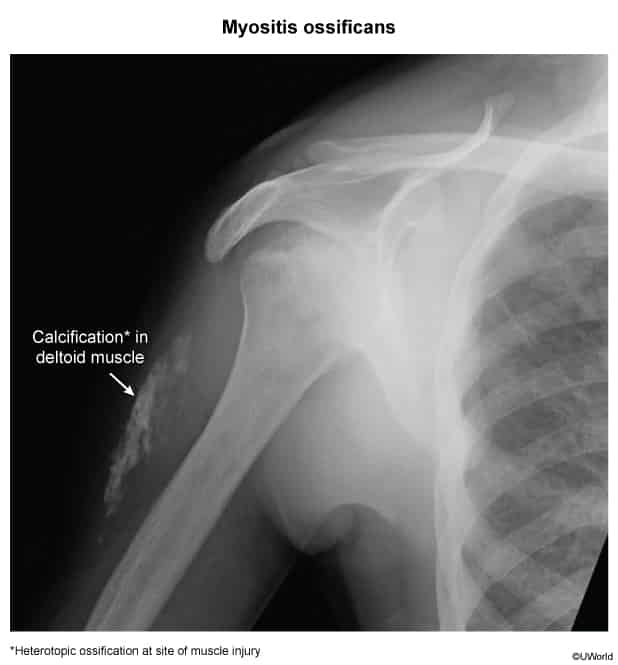Myositis ossificans (heterotopic ossification) is a benign, heterotopic ossification of soft tissue and/or skeletal muscle that either occurs congenitally or, more commonly, following soft tissue or muscle injury
- Etiology
- Posttraumatic: especially after implantation of an artificial hip joint or after blunt muscle trauma
- Trauma initiates the expression of bone morphogenic proteins, which promote in-migration of spindle stem cells. These cells differentiate to fibroblasts (which produce collagen and extracellular matrix) and subsequently to chondrocytes and osteoblasts (which are responsible for production of osteoid and mineralization).
- Posttraumatic: especially after implantation of an artificial hip joint or after blunt muscle trauma
- Clinical features: localized symptoms in the affected muscle/tissue (e.g., quadriceps femoris muscle, brachialis muscle)
- Restriction of movement
- Muscle stiffness
- Pain, swelling
- Palpable soft tissue mass
- Diagnostics
- Soft tissue ossification is detectable on conventional x-ray.

- Radiological findings: periosteal reaction with periarticular soft tissue calcifications (eggshell calcification)
- Laboratory findings: ↑ alkaline phosphatase and ESR levels
- Soft tissue ossification is detectable on conventional x-ray.